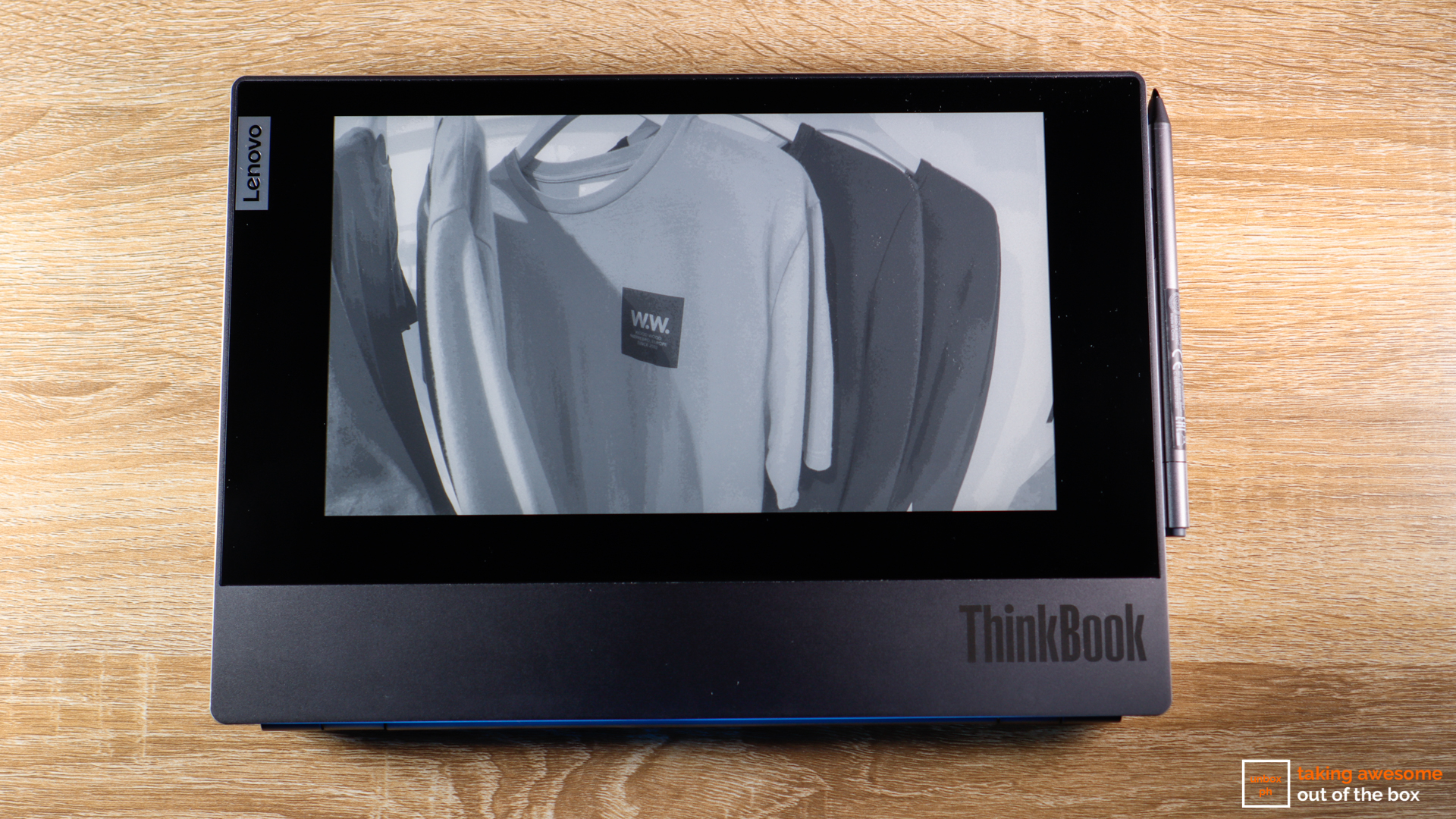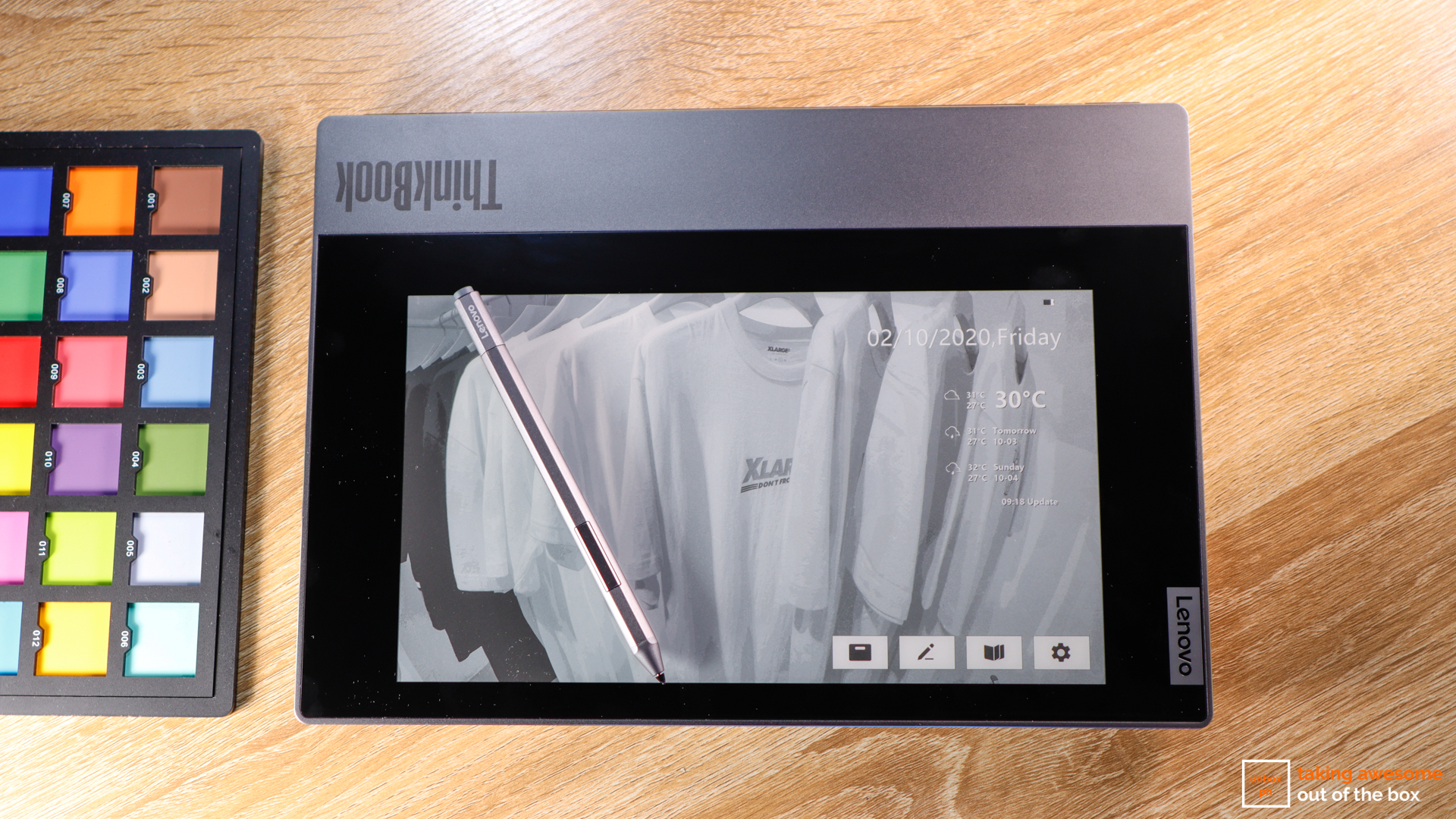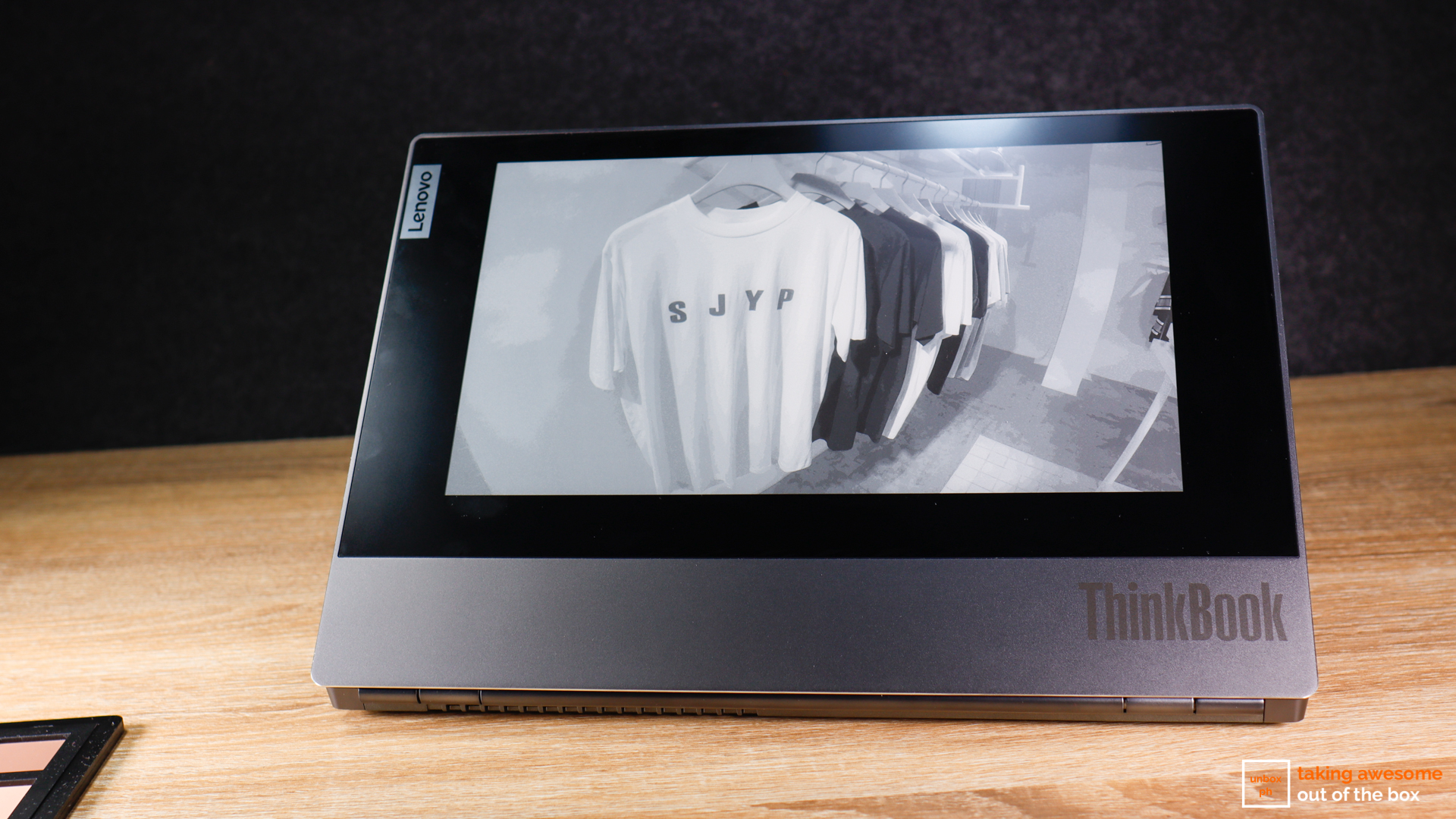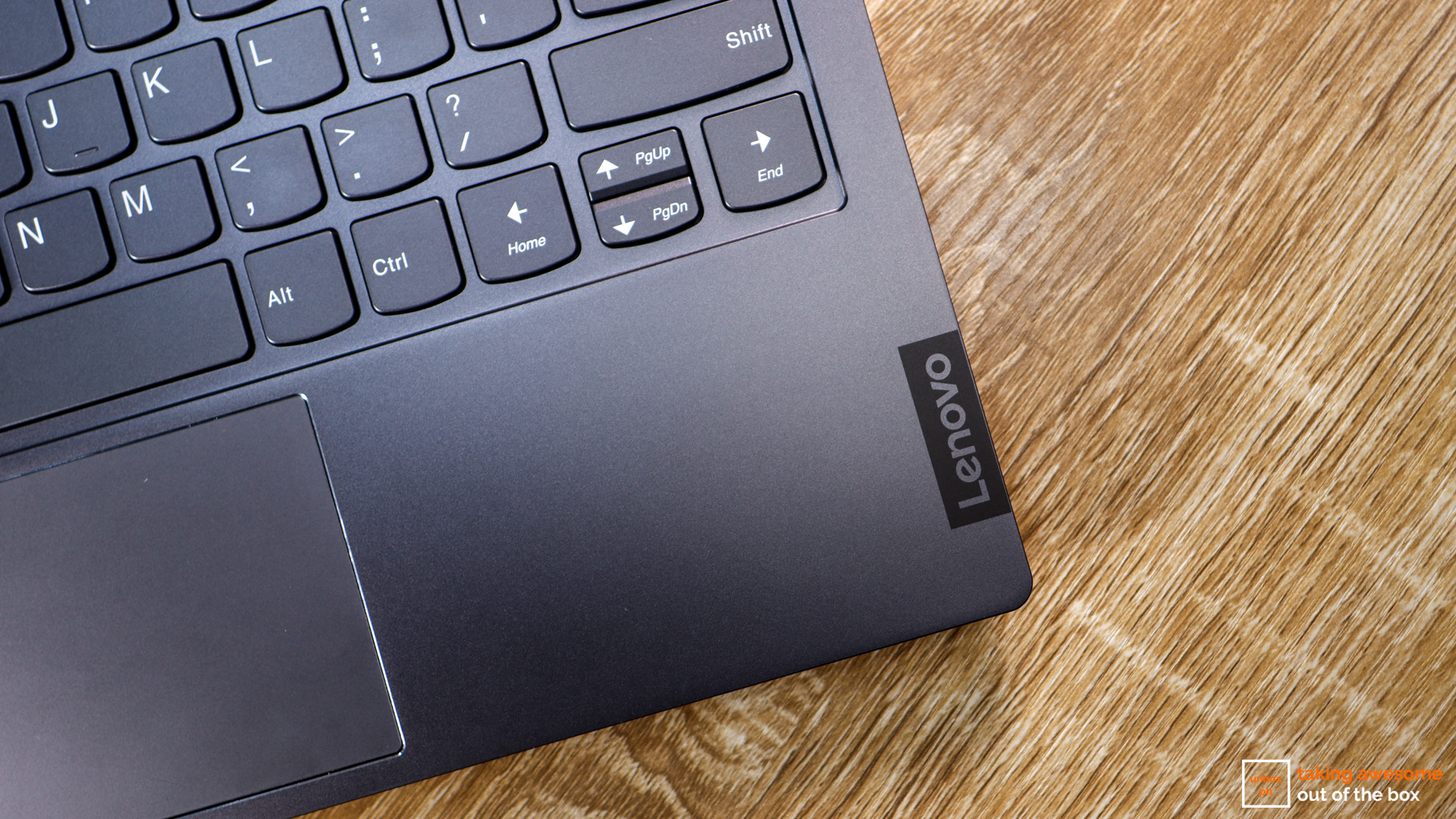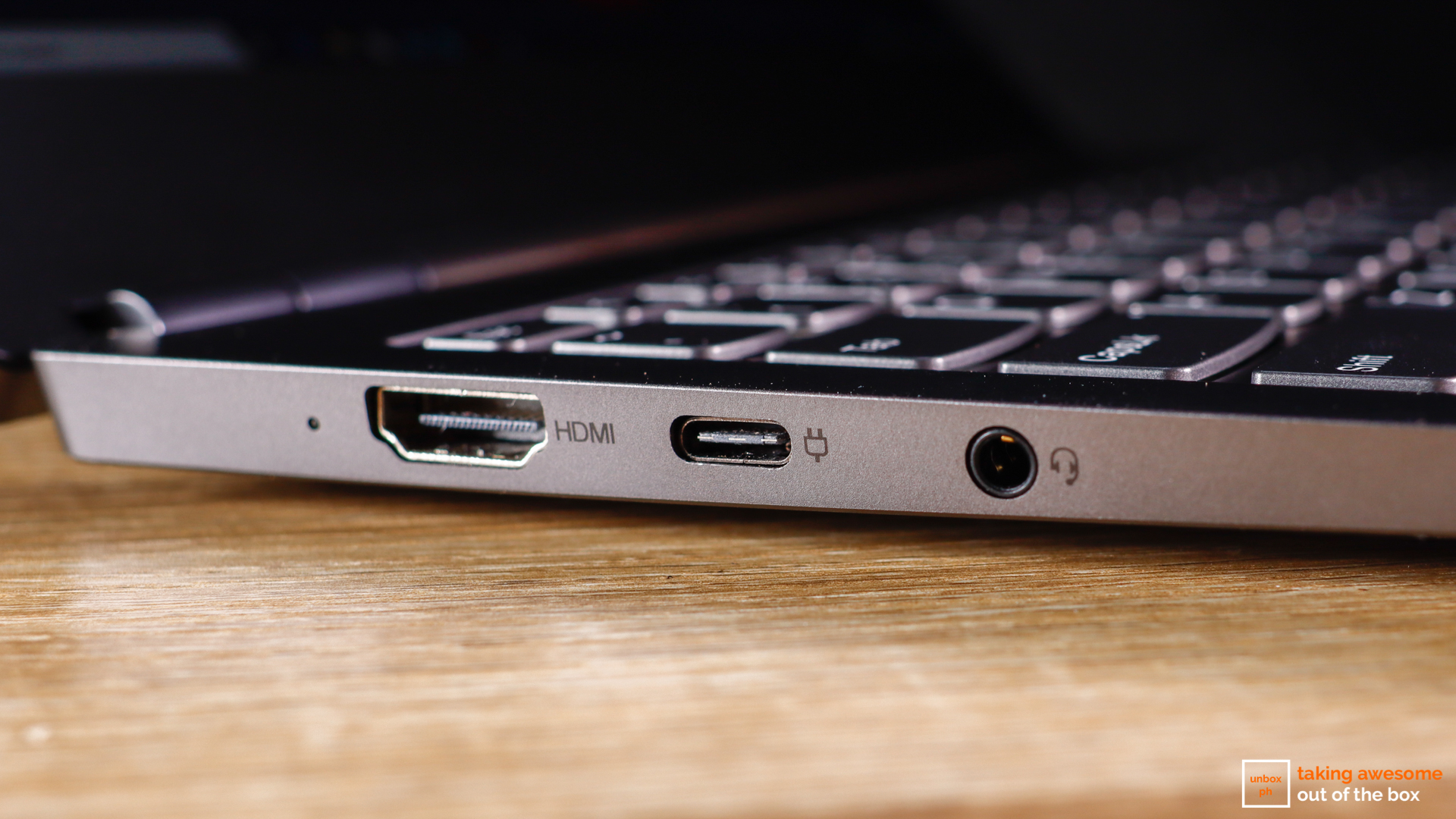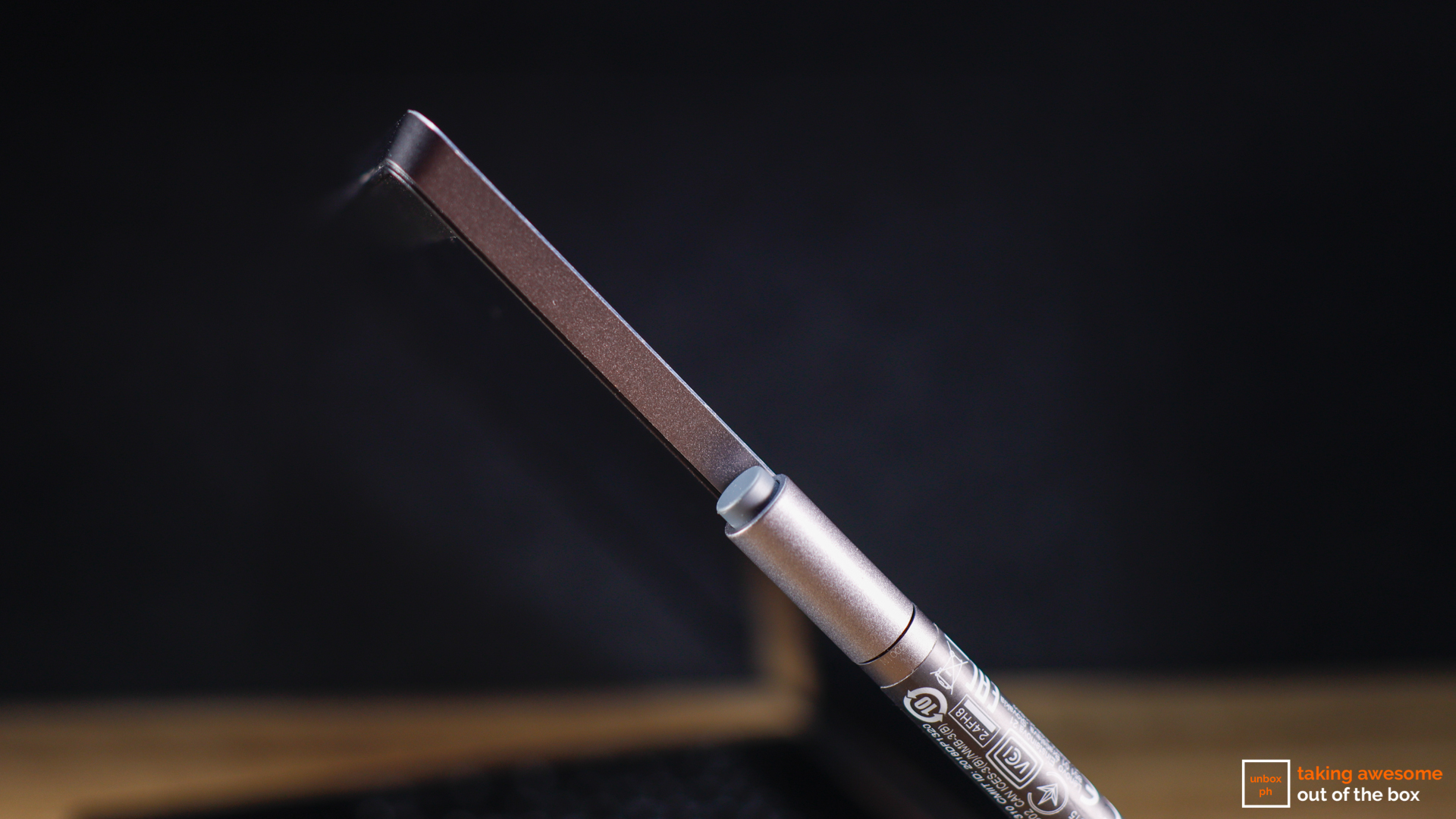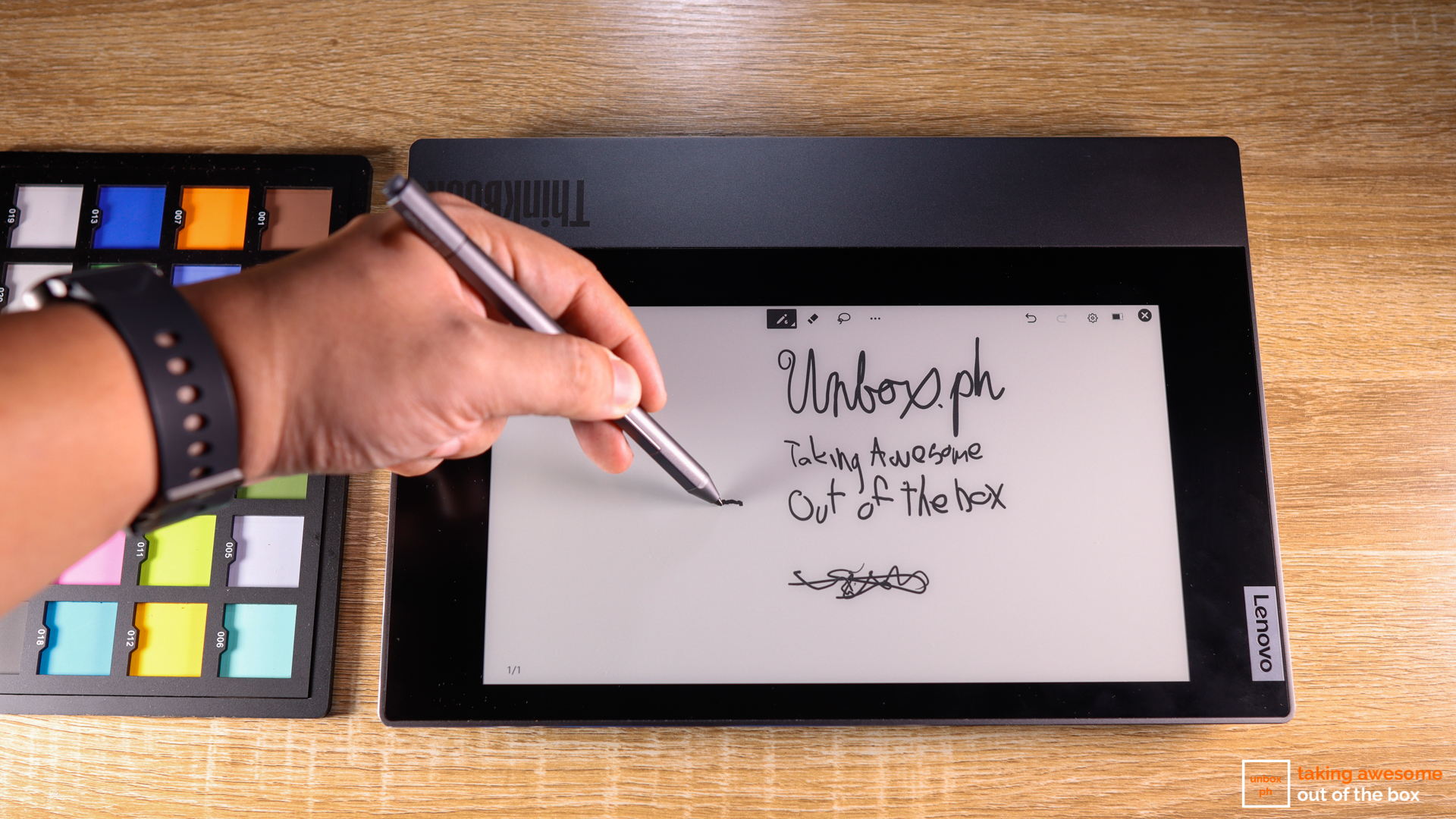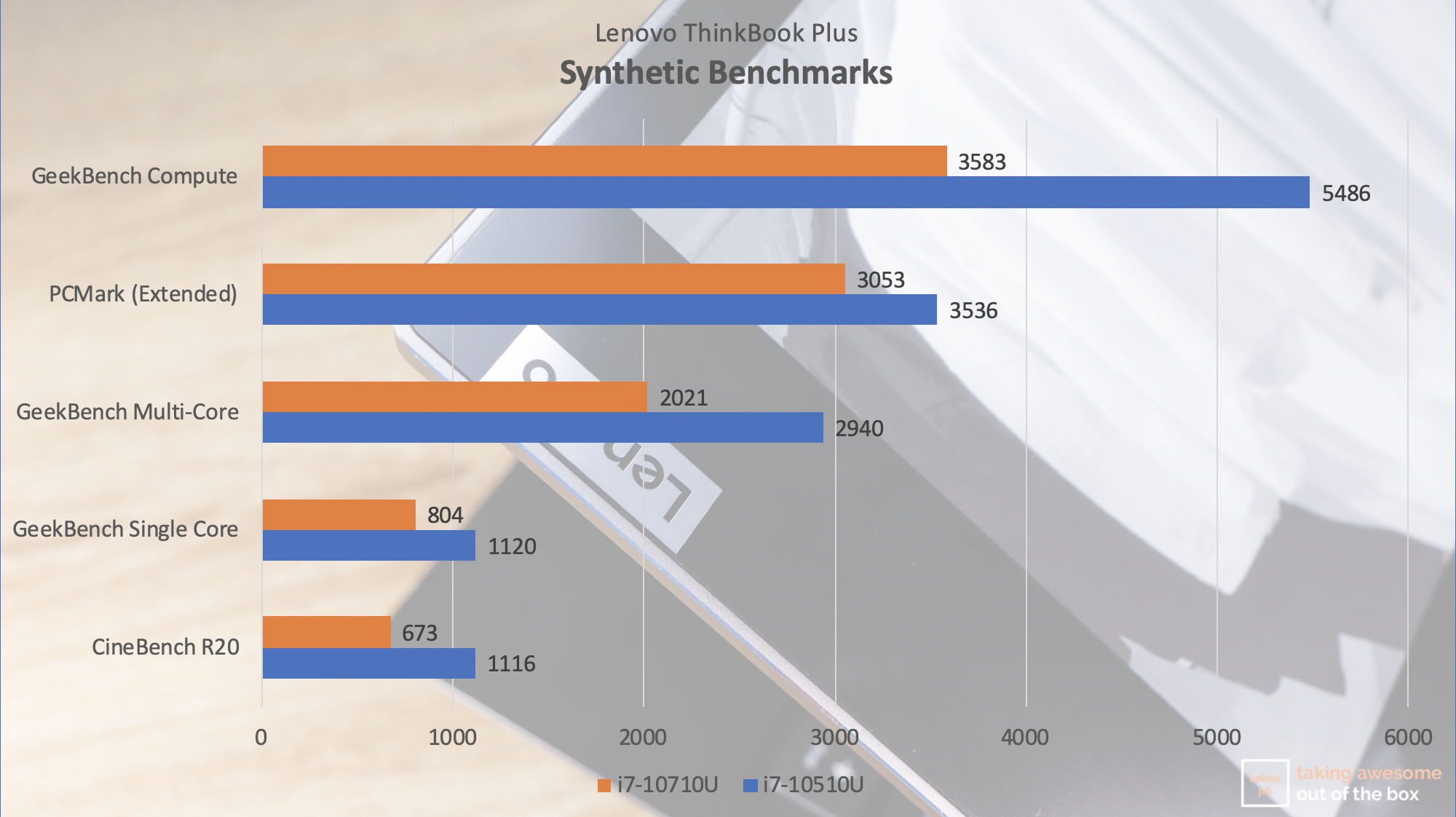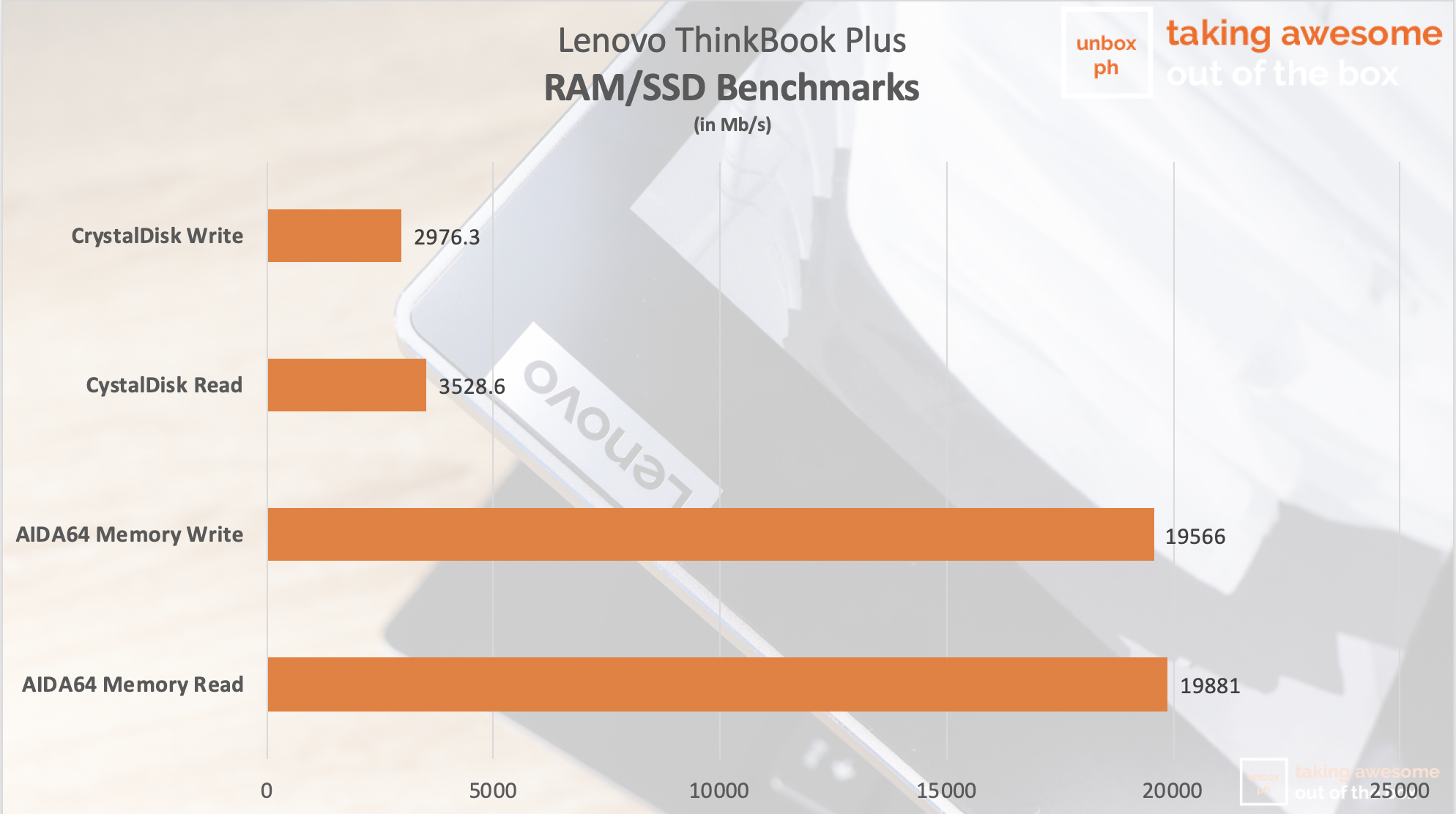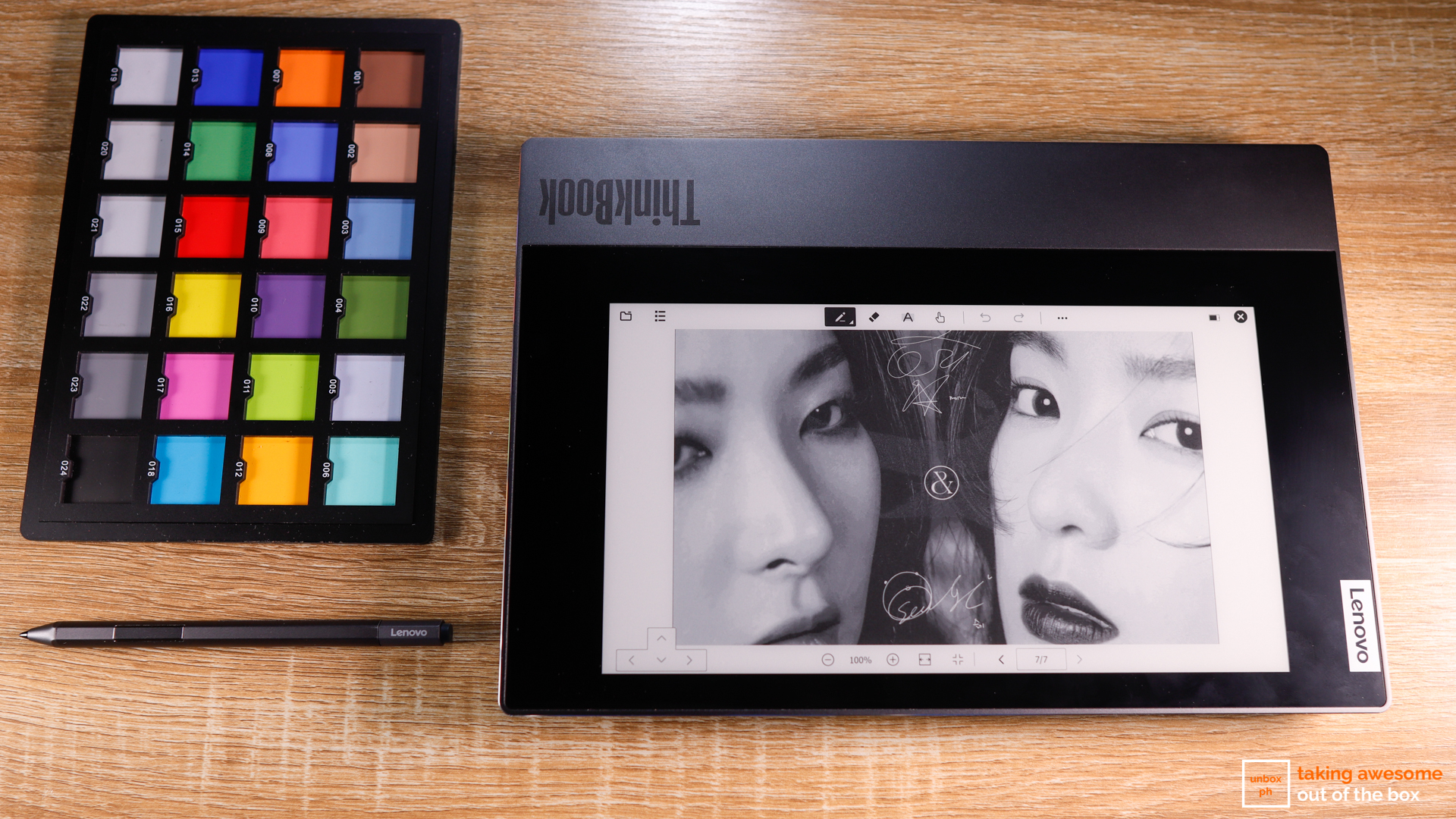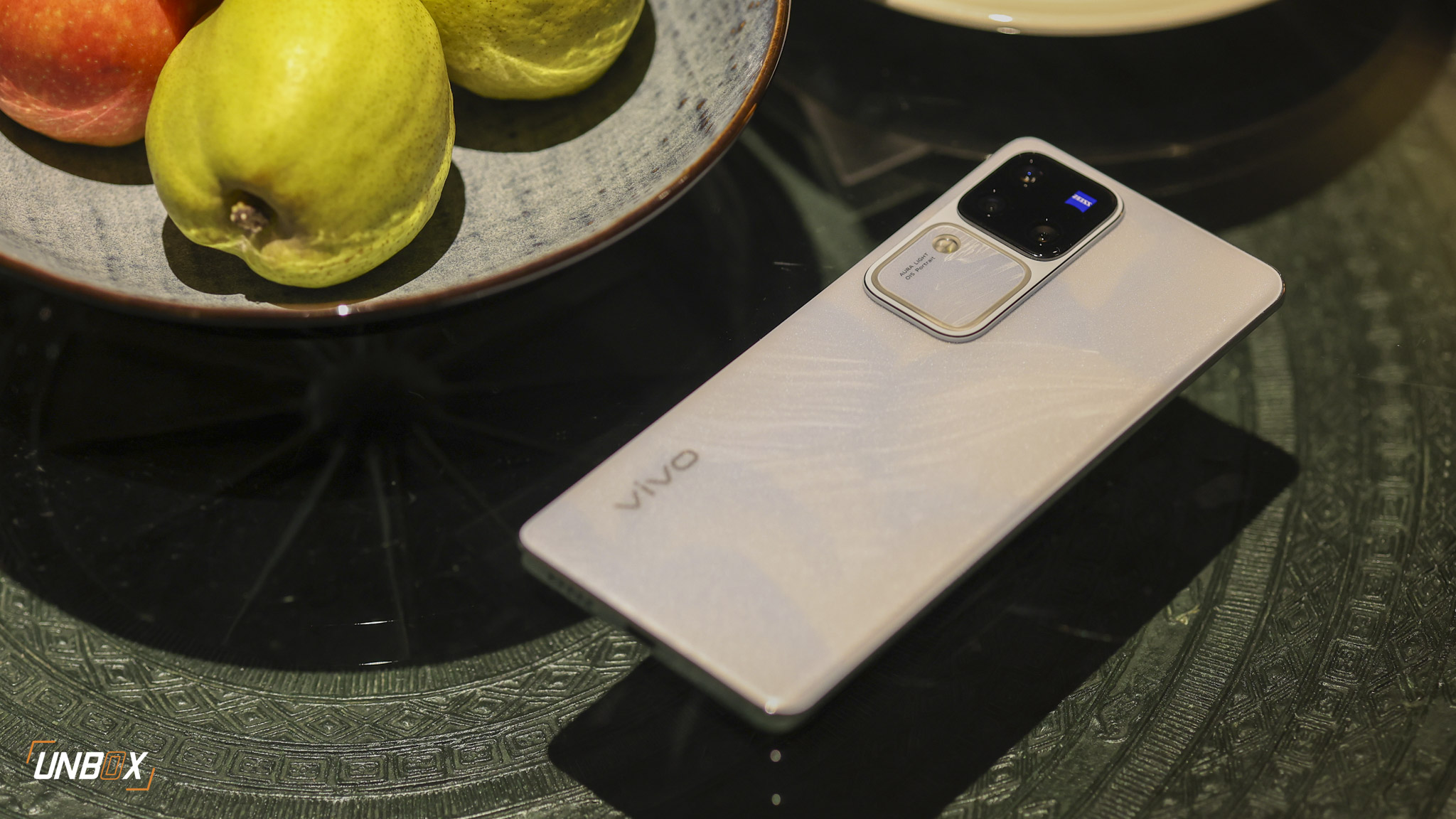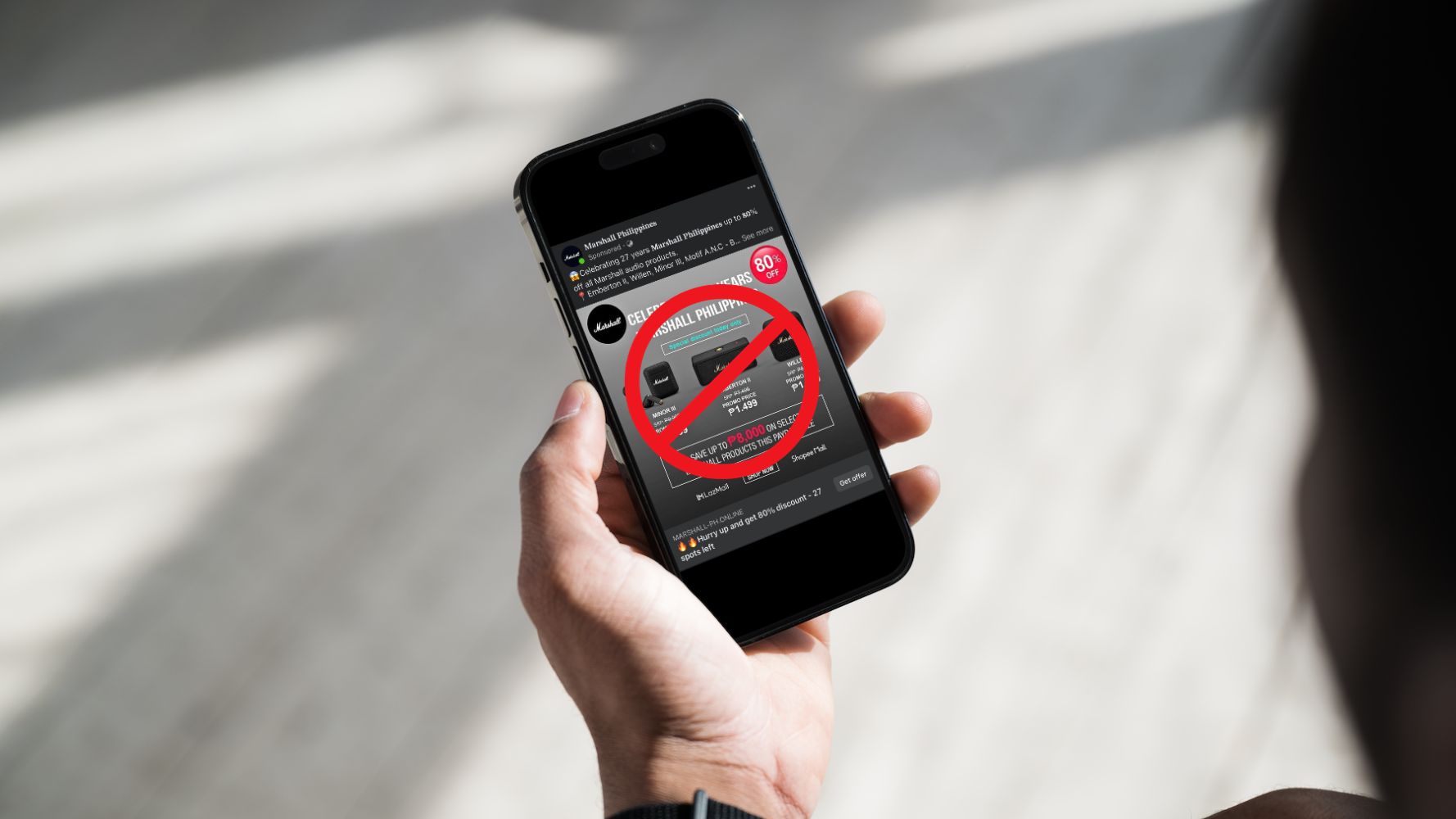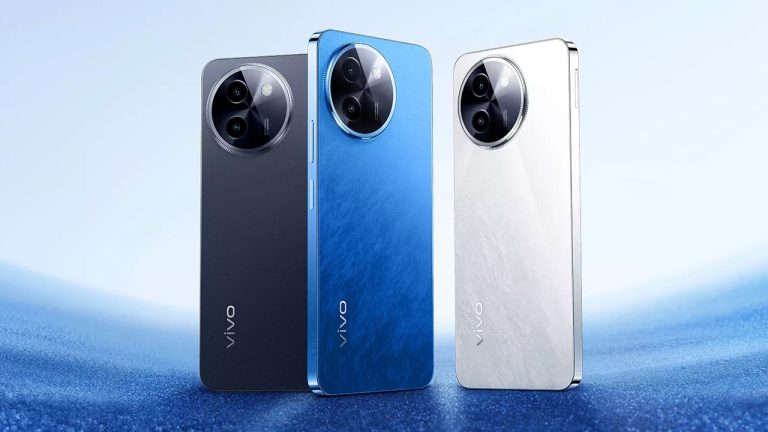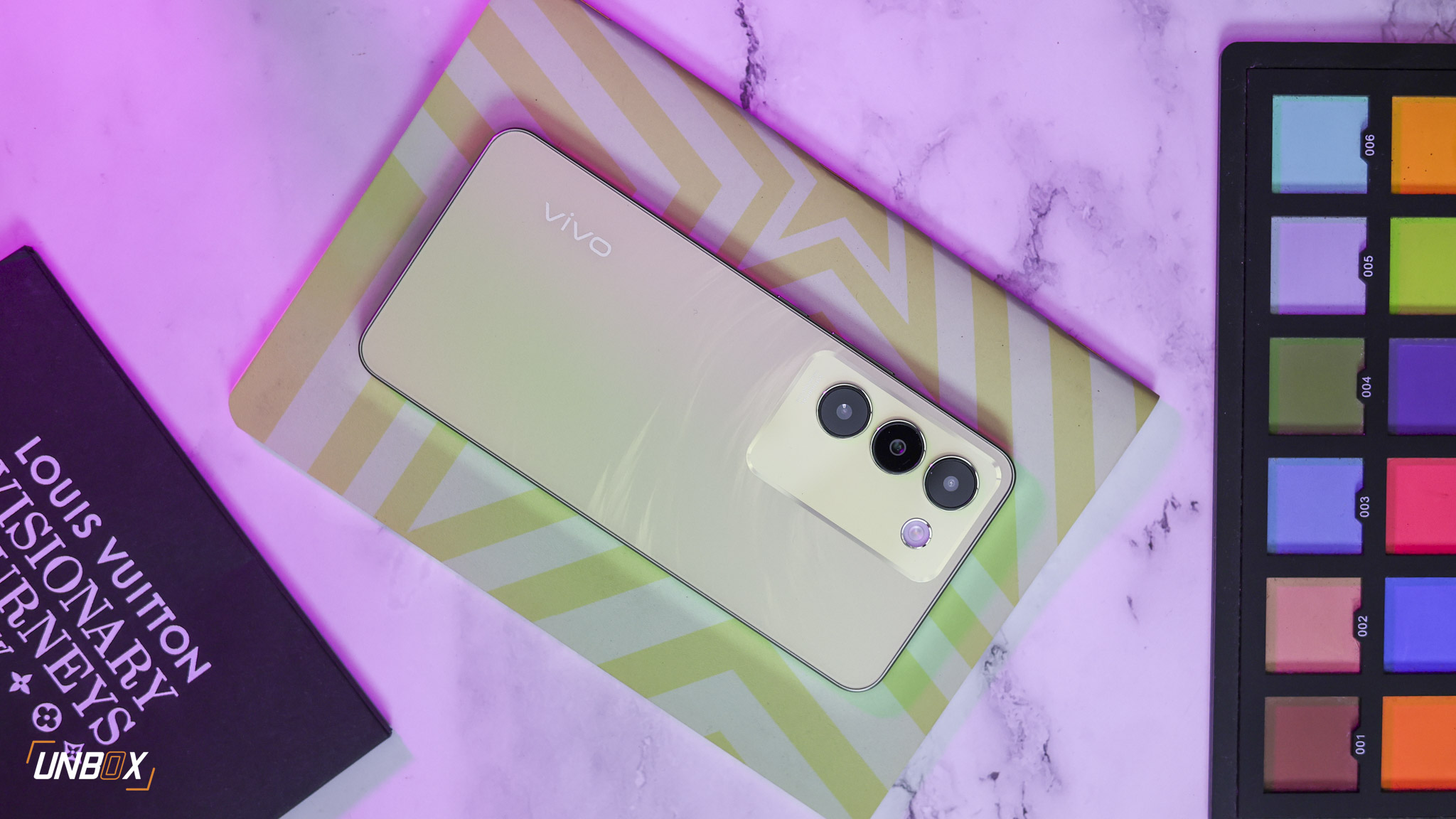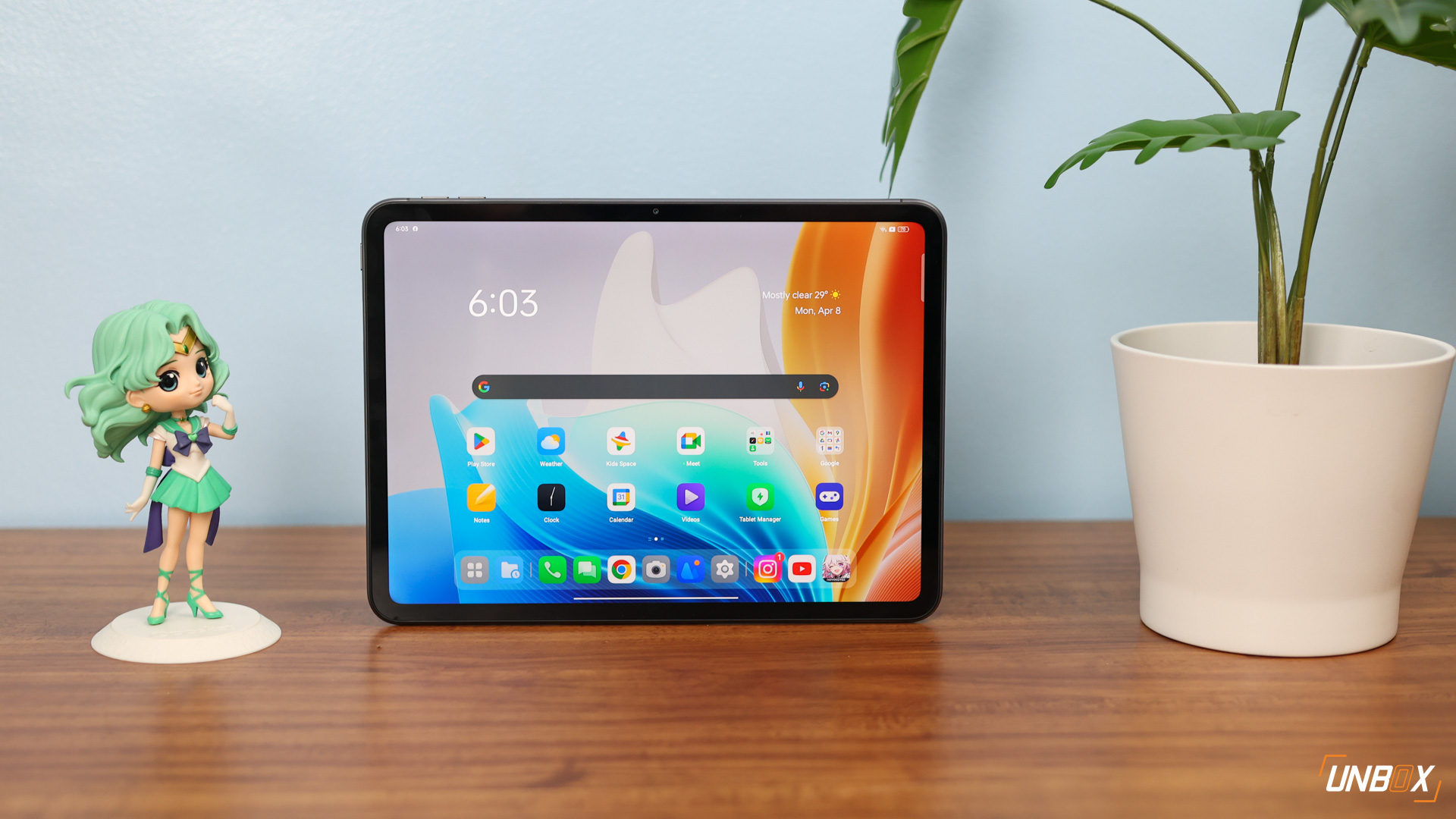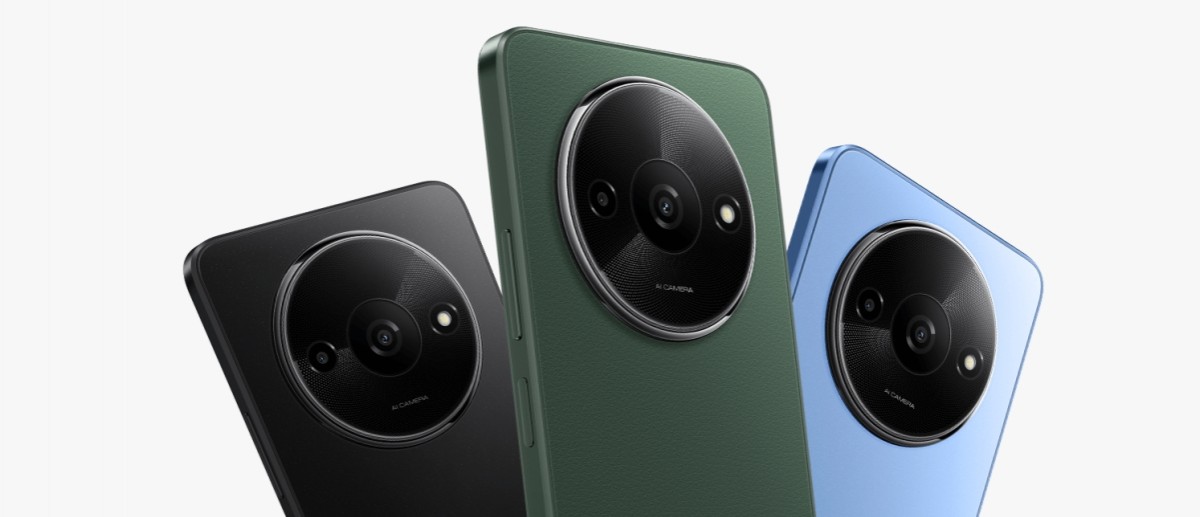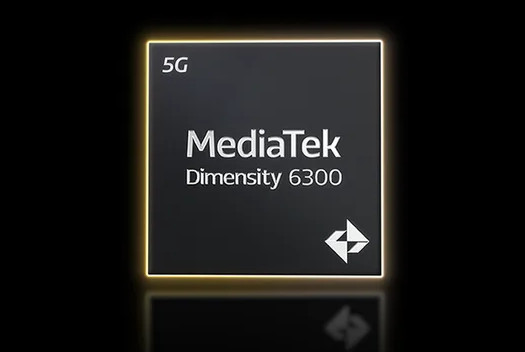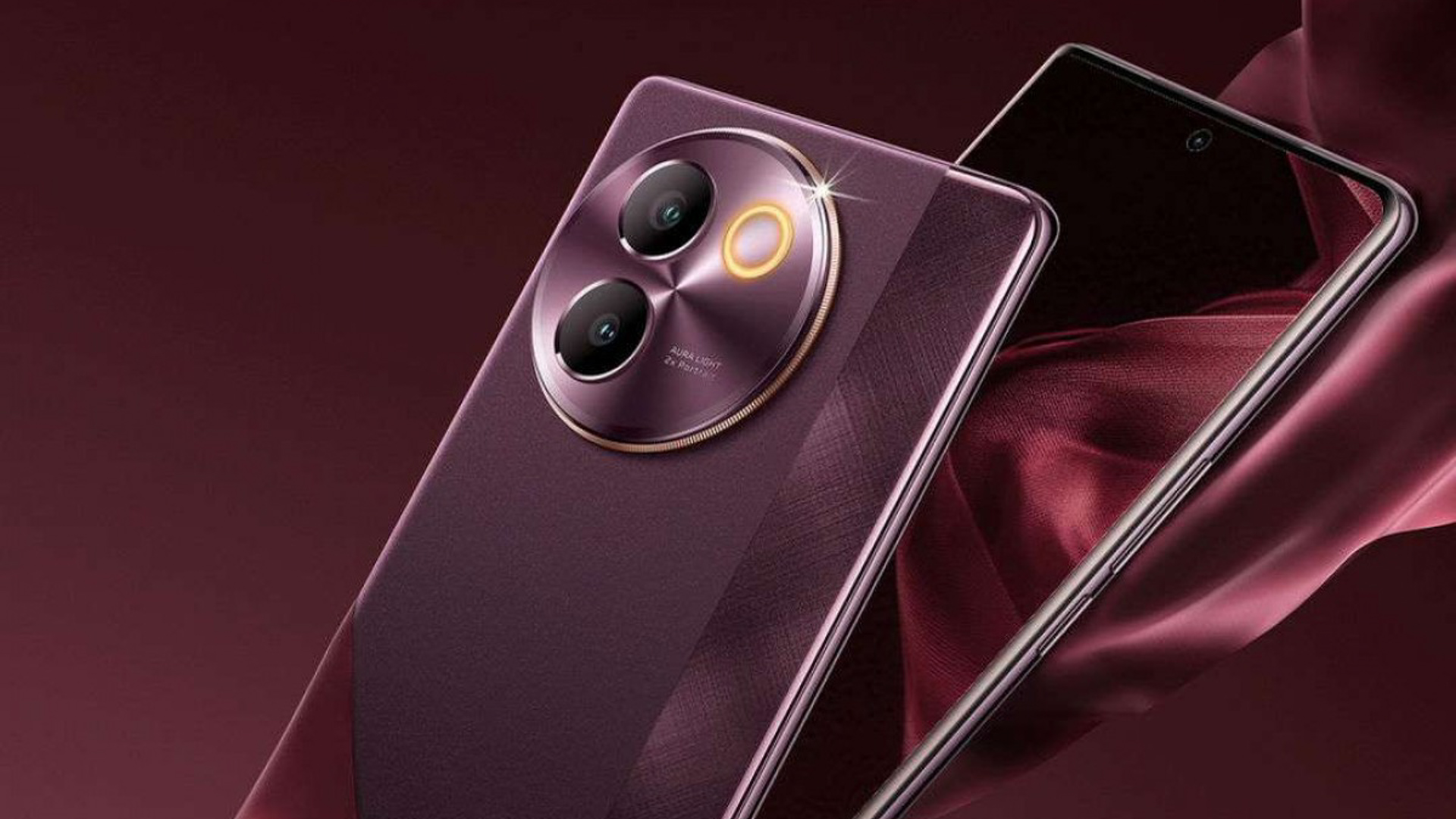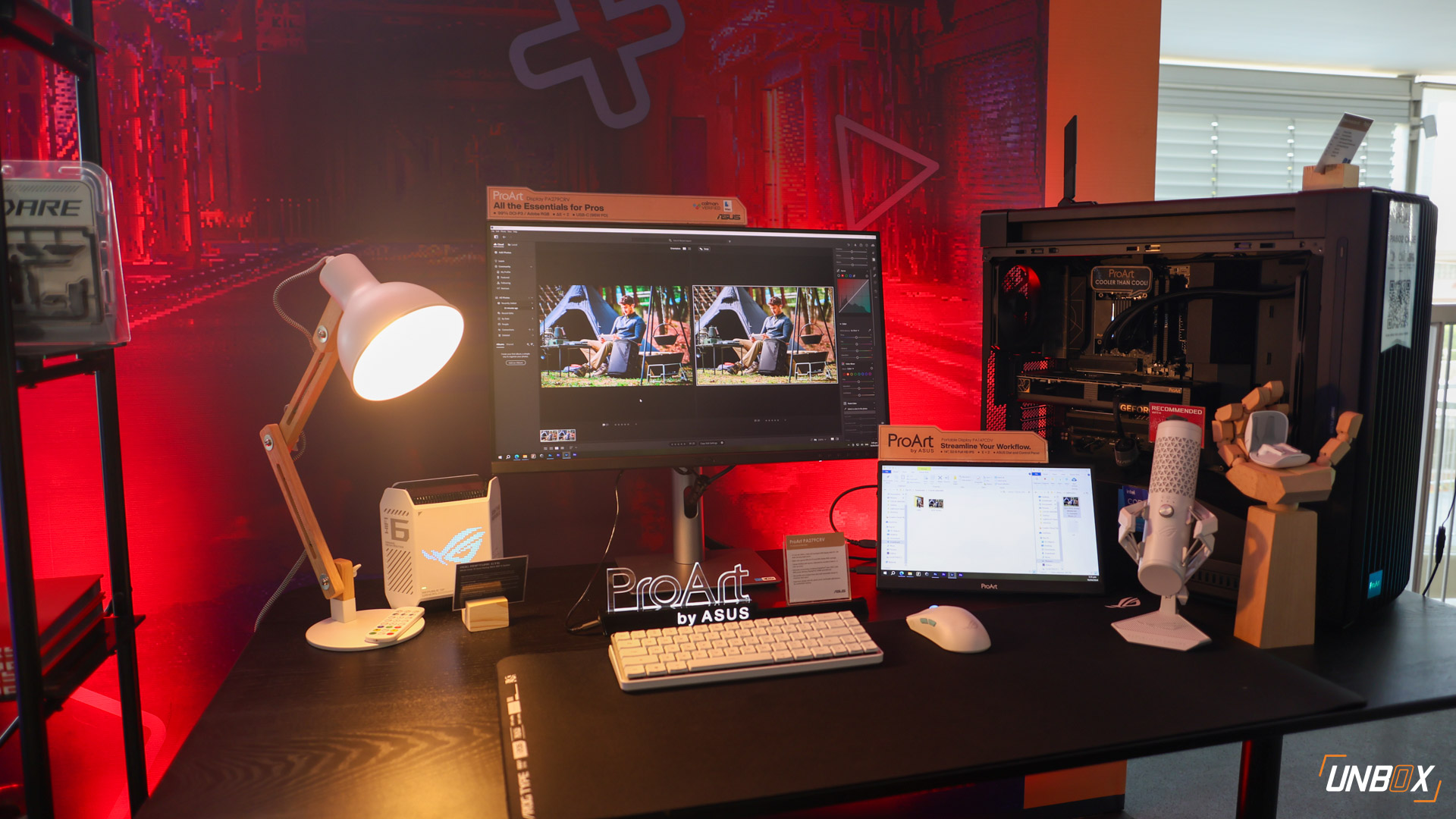Verdict: Lenovo was onto something with the secondary display on the ThinkBook Plus, adding an extra layer of productivity to a device that’s usually useless with the primary display off. Unfortunately, their great idea is marred by a smaller than average battery as well as unstable software, and while the overall idea is sound, there’s still plenty of improvement to be had in the dual-screen concept.
The ThinkBook Plus is priced at Php 104,950 and comes with a Core i7-10510u processor, 16GB RAM, and 512GB NVMe SSD.
Pros
- A useful secondary e-ink display
- Solid aluminum build
- Magnetic ports for securely storing the digital pen
Cons
- Undersized battery for its thickness
- The thick bottom display bezel
- Software issues need to be resolved
Lenovo hasn’t had great success using e-ink tech for its laptops – it’s two initial tries with the tech in the form of the original YogaBook in 2016 and YogaBook C930 were commercial flops. It turns out people aren’t exactly keen on typing on flat, capacitive e-ink keys.
Those setbacks aren’t stopping Lenovo from developing the tech further, and this time around Lenovo is utilizing e-ink tech in a novel and useful way – as a secondary display on the lid when the laptop is closed. It’s a great idea with a less than ideal execution – though there’s certainly a discussion to be had about the merits of the tech on traditional laptops like the ThinkBook Plus.
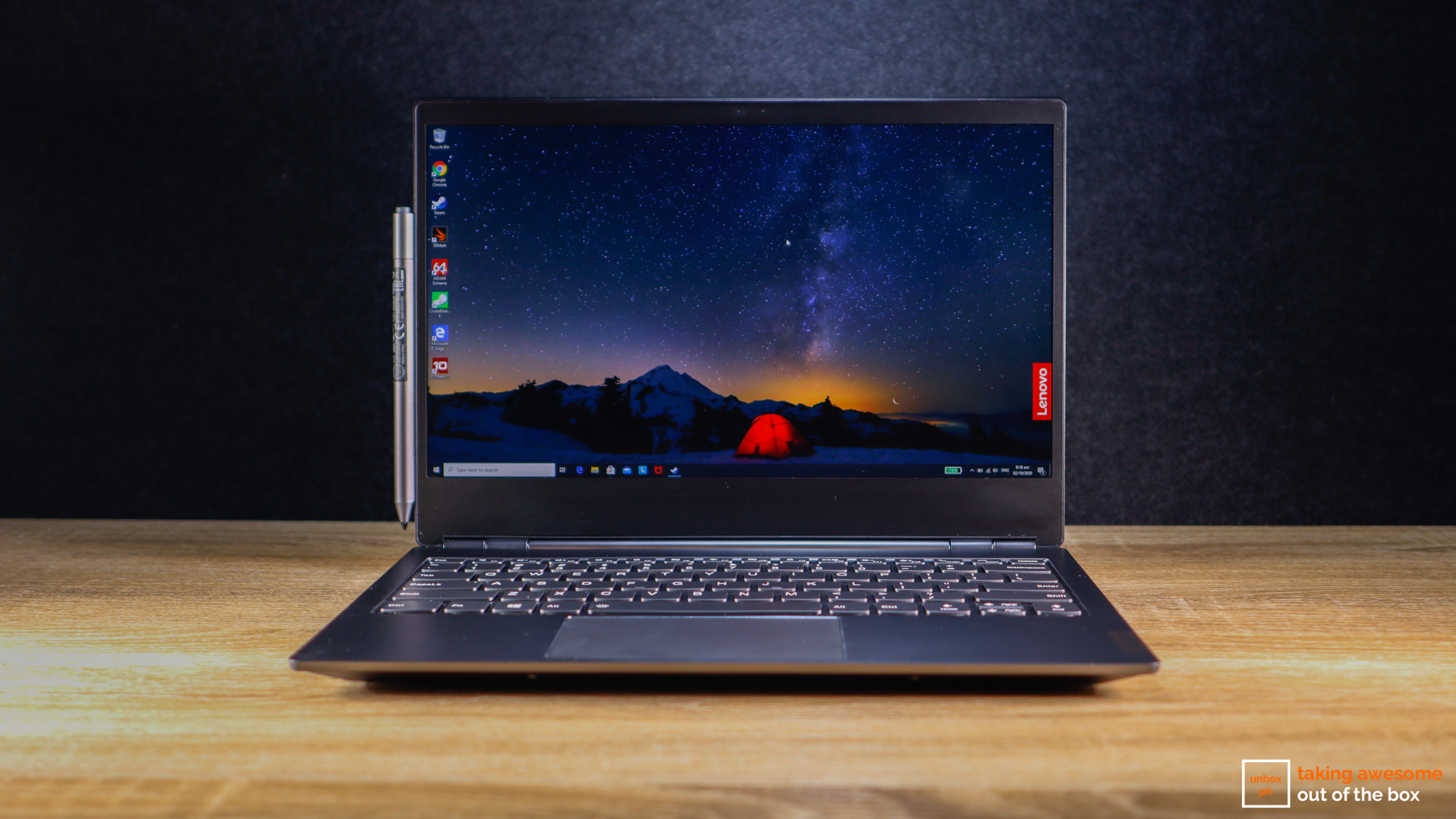 Design
Design
Business notebooks are generally straightforward when it comes to design, and the same goes for the ThinkBook Plus. Dressed in Iron Grey, the ThinkBook Plus has the, no-nonsense, ready-for-corporate aluminum body as its non-Plus siblings. The only visual differences here is the relocated power button/fingerprint scanner, the absence of Lenovo’s proprietary charging port (the ThinkBook Plus charges via USB-C), and the top lid that houses a 10.8-inch e-Ink display.
The aluminum chassis gets an anodized matte coating, making it smudge resistant and durable enough for everyday wear and tear—something you absolutely want for a business notebook. It has sharp lines that are typical of any Think laptop, including the company’s more common ThinkPad notebooks.
The ThinkBook Plus keeps its ports to a minimum: HDMI, USB-C, and combo headphone jack in the left, and two USB-A ports in the right. We wished that Lenovo equipped the ThinkBook Plus with two USB-C ports since you will be using the single USB-C more often for charging the laptop. Both sides of the top lid have magnets for securely placing the digital pen.
 Display
Display
The ThinkBook Plus has the same 13.3-inch display found on the ThinkBook 13. That being said, you still get the annoyingly huge bottom display bezel that Lenovo could have utilized instead to fit in a bigger 14-inch display. Fat bottom bezel aside, the ThinkBook Plus’ display has a Full HD resolution and covers 92% of the sRGB gamut.
The secondary display, which is a 10.3-inch e-Ink panel, is used together with the supplied digital pen. This panel is powered by Lenovo’s ThinkBook e-Ink application, which comes with features such as note-writing, PDF reader, and the option to view weather, emails, and calendar at a glance. You can choose any photo as a background image, and you can opt to have multiple images displayed on the monochrome panel through the carousel feature.
The note-writing feature is useful for writing down quick notes during meetings or for drawing during one’s spare time. The PDF reader also works well as an e-Book reader, so you can use the e-Ink display for reading some of your favorite titles. The current version of the e-Ink software includes a drawing board feature, which lets you use the e-Ink display as a tablet while the ThinkBook Plus is connected to an external display.
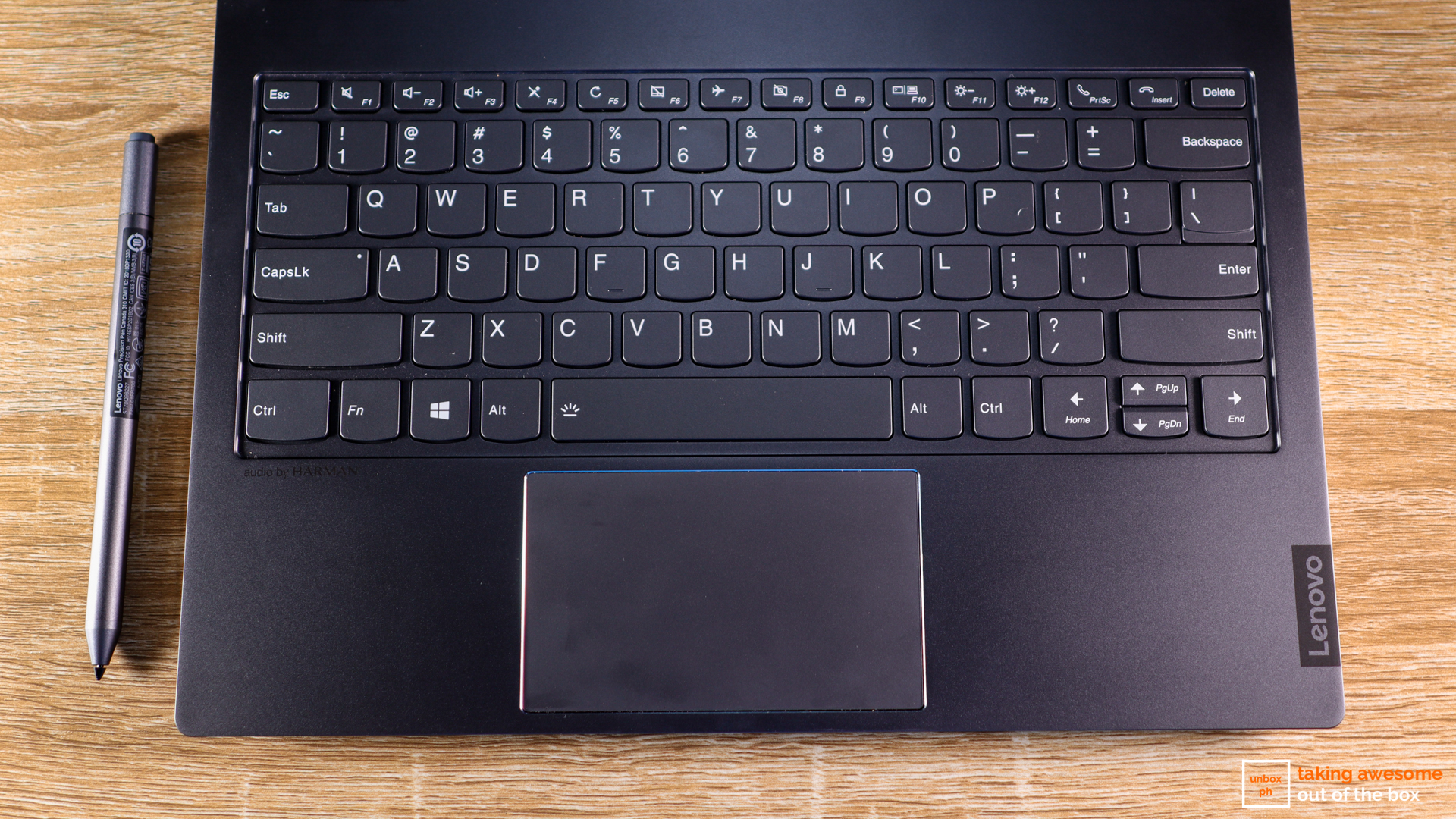 Keyboard and Trackpad
Keyboard and Trackpad
While it is part of the Think line, the laptop uses a keyboard layout that is closer to Lenovo’s premium Yoga line rather than its more business-focused lineage. That being said, the ThinkBook Plus’ keyboard is a pleasure to use—especially since Lenovo is known to make laptops with excellent keyboards, from decent key travel to well-spaced keys. You’ll also probably won’t miss that trackpad nub.
The same goes for the trackpad as well. Since it shares the same layout as the Yoga notebooks, the ThinkBook Plus’ trackpad is silky smooth and has a very good clicking response.
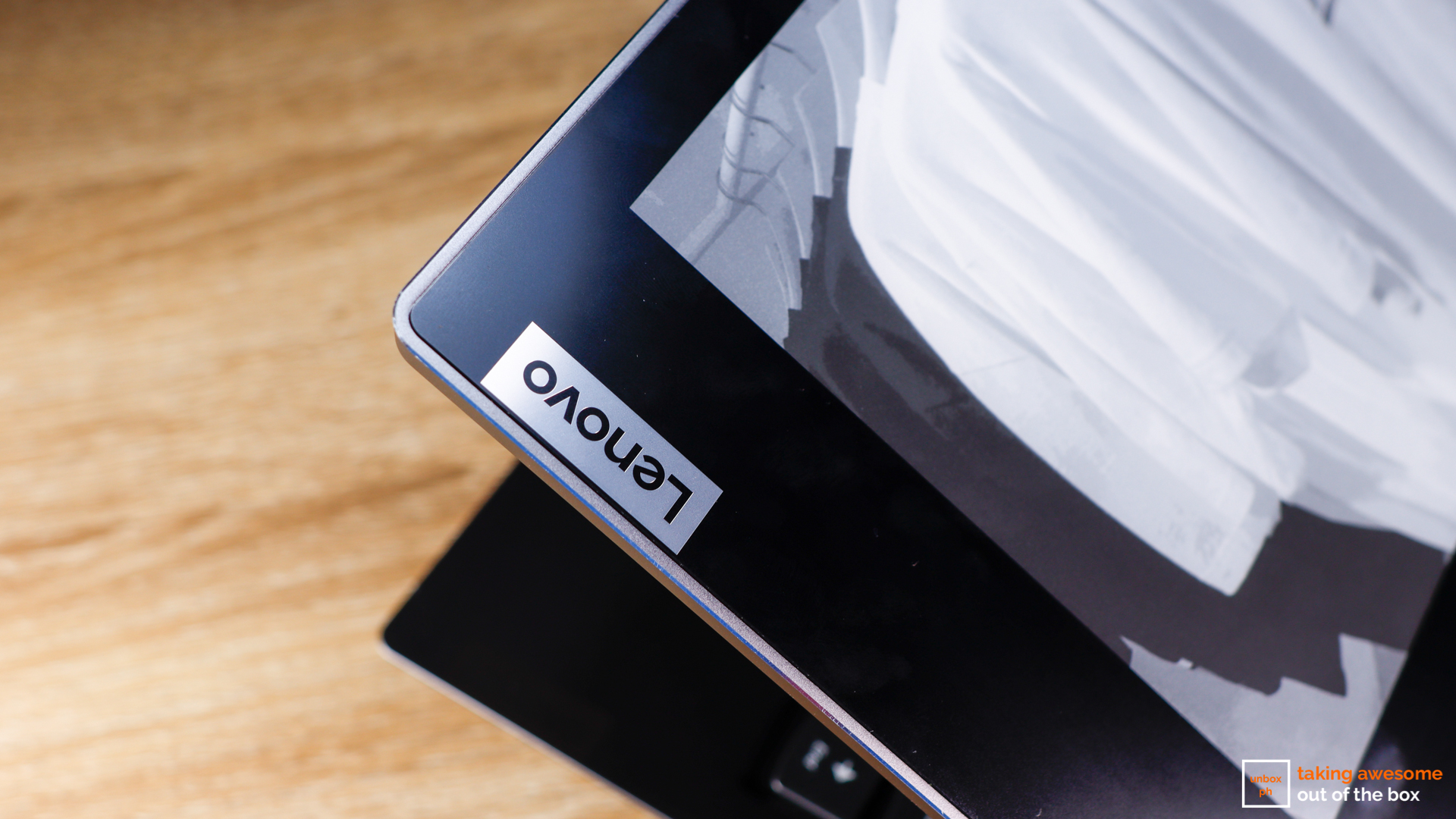 Performance and Battery Life
Performance and Battery Life
Powering the ThinkPad Plus that’s available in the Philippines is a Core i7-10510u processor that is paired with 16GB RAM and 512GB internal storage. For our benchmarks, we will be comparing it with a variant that uses a Core i7-10710U processor. Check out the benchmarks below:
While the i7-10710U processor should be better than the i7-10510U on paper because it has more cores, the latter performed better because it has a more stable processor architecture—which should explain why Lenovo is offering only one variant of the ThinkBook Plus to the Philippines. Other than the processor difference, both variants have equally fast NVMe SSD drives and capable DDR4 RAM.
For the software side, the ThinkBook Plus runs on Windows 10 Pro as it is necessary for its suite of business-centric security features. While it has all the necessary software (especially the e-Ink application) needed for business productivity, we encountered stability issues where the laptop would freeze randomly regardless of what task you are doing. This was later on resolved by installing an updated BIOS driver to the ThinkBook Plus and updating the e-ink software. We hope Lenovo addresses this by immediately rolling out the necessary updates to ThinkBook Plus users.
As for battery life, the ThinkBook Plus’ 45wHr battery is on the small side, considering the thickness of the laptop. On our YouTube video loop test, we recorded around 5 hours of usage before the computer went to sleep. On actual use, we averaged around 4 hours of use before we had to plug it into an outlet.
Charging the ThinkBook Plus is done via USB-C, and its 65w PD charging can top up the battery to 100% in a little over two hours.
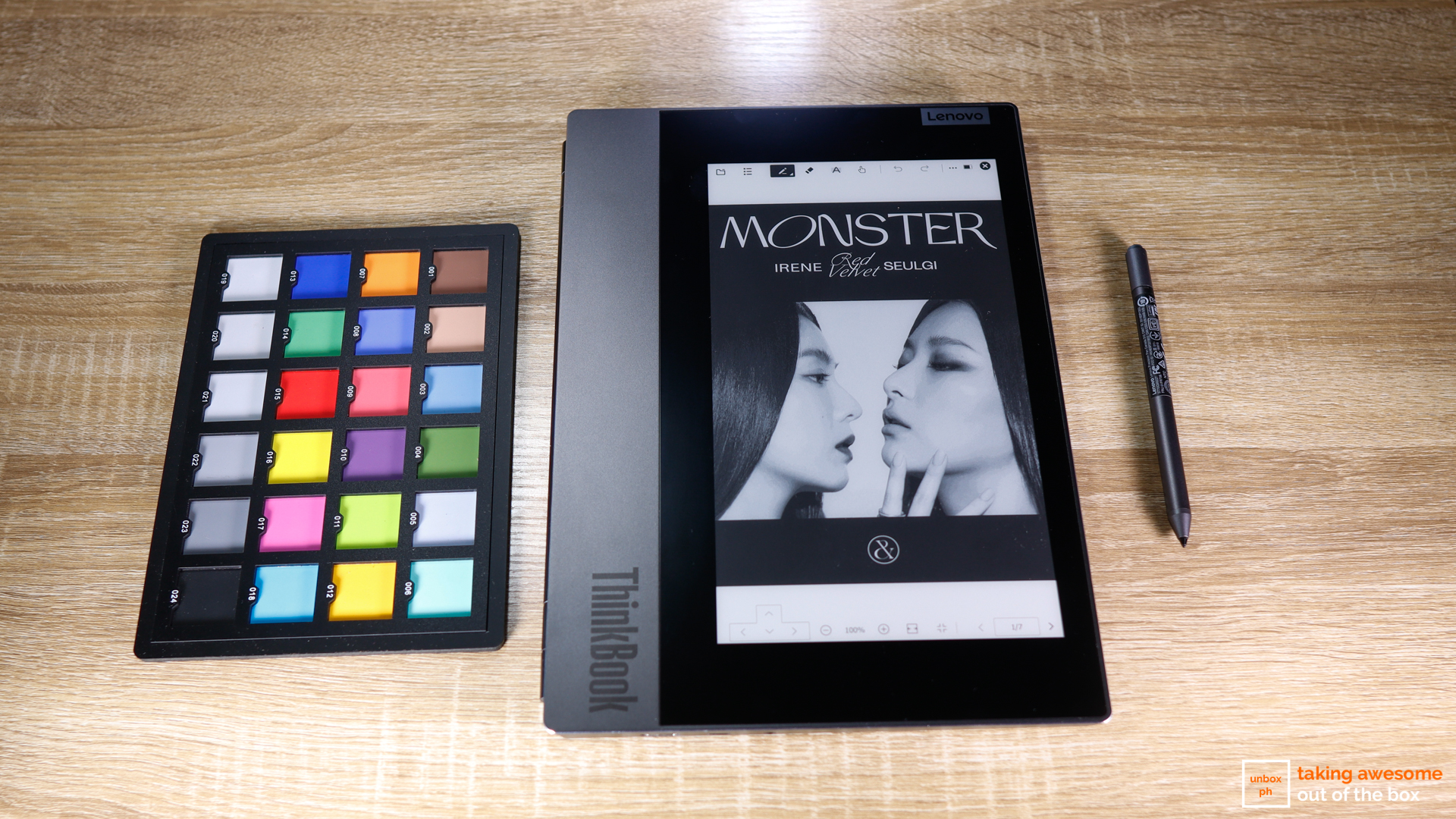 Wrap-up and Conclusions
Wrap-up and Conclusions
While adding an e-Ink display does help in making the ThinkBook Plus a great productivity workhorse, Lenovo still needs to fine-tune the software for a smoother experience. If all the bugs and glitches are addressed, the ThinkBook Plus can function as a good companion for employees who have to deal with a lot of meetings and conferences as part of their day-to-day routine.
Overall, the ThinkBook Plus is a great 2-in-1 concept for Lenovo, though there’s still plenty of room left for improvement.


